all photos by Frank Rispoli
Frank Rispoli has spent a lifetime using his camera to capture aspects of city life that most never notice, much less consider to be worthy of such extensive and expressive documentation.
However, Rispoli is far more than a mere recorder of striking images. He is a composer of unexpected serendipity, expertly crafting instant tableaus of urban squalor transmuted into visions of casual elegance that vibrate with an alluring decadence. Rispoli peers through the cracked surfaces of the battered cityscape and performs a visual sorcery that harnesses the inherent power of women’s fashion and its effect on the world around it. Rispoli is not only a composer; he is also a conductor, literally channeling the electricity that courses through the streets of New York City, his camera the exposed wire, shooting sparks and snatching pure moments out of thin air.
Frank Rispoli was a reticent child and a tendency to cast his eyes downward developed into a fixation on women’s shoes, and the legs and feet that showcased them. Through years of paralyzing shyness, Rispoli’s obsession was akin to sharing a secret with these women, as he appreciated their poise and elegance. It is said that women dress for other women, but Rispoli noticed too. Their accoutrements were destined to dominate his work. A schism between his conservative Christian upbringing and his emerging desires was inevitable. And thus, compulsive childhood behavior and ecstatic art merge and result in something extraordinary.
In the late 1970s, inspired by Guy Bourdin’s groundbreaking photography of Charles Jourdan’s innovative shoe designs, Rispoli began pounding the pavement. He was searching for evidence of the sultry and the surreal in the shadows and was intent on outlining the contours of those who lived on the margins of polite society. Provided, of course, that they strutted around town in a killer pair of heels.
Despite his night owl persona, Rispoli managed to hold down a straight job. As an industrial designer for several world-class companies, Rispoli was able to satisfy the technical aspects of his schooling, but it wasn’t until the sun went down that he was truly able to flex his creative muscles. According to Rispoli, he was stalking the streets of New York City “six and a half nights a week.” Armed with his portfolio, Rispoli would enlist the type of women that had fascinated him since childhood. Now an equal, Rispoli was able to garner sympathetic allies to help him carry out his mission and master his passion. As his aesthetic and subcultural bonafides grew in number and coalesced into images with a distinctly New York bent, Rispoli found it easier to snare willing subjects into his photographic web. Where once he had been rendered mute by these everyday femme fatales, now they were his partners in crime. To gaze at these pictures is to tap into an undercurrent of mutual respect and admiration that flutters back and forth between the photographer and his models. Even at their most risque, Rispoli’s portraits sing with respect for their subjects. He is tapping into their innermost desires and elevating them to a level that borders on holy. These women glide about the city on pedestals and Frank Rispoli presents them in their natural habitat, hovering just above the rest of us.
Up until the French Revolution (just imagine Rispoli’s take on all that red!), high heels were worn by both men and women. But when they came back in vogue during the late 19th century, high heels were the sole provenance of the fairer sex. After World War II, designers such as Jourdan and Salvatore Ferragamo took the heel to new heights as they achieved the pinnacle in decadent luxury—the stiletto heel. Much purple prose has been deployed in an attempt to capture the effect that the stiletto heel has on its admirers. Certain men have a visceral attraction to the stiletto that borders on the religious. Frank Rispoli is a high priest of the high heel and he welcomes all to his flock. In a certain sense, Rispoli’s entire photographic output has been a visual paean to the enduring magnetic pull of the high heel. After a decade when they cycled out of fashion, the stiletto made a roaring comeback in the 1970s. A cohort of assertive women sought to subvert the cliche of the femme fatale to their own needs, and a key weapon in their arsenal was the stiletto heel. This is where Rispoli enters the picture—a willing accomplice to the new generation’s desire to challenge the shifting power dynamics in the rarified atmosphere of Manhattan’s fashion and art demi-mondes.
As a native son, Rispoli is able to make sense of the nonstop kaleidoscope of New York City. In his mind’s eye, the erotic is always at play with the thrilling chaos of urban dwelling. Rispoli effortlessly transforms harsh backdrops featuring crumbling infrastructure into a glorious canvas that has the appeal of modern myth. And what makes the myth plausible is the women.
The women are the true stars of Rispoli’s photographs. These portraits reveal just enough about the characters strewn about in them. Due to Rispoli’s habit of keeping his lens below the shoulders, the viewer must consider the unseen elements of the presented tableau. Rispoli’s framing prompts the viewer to fill in the hidden components of each portrait. The mind reels. Who are these mysterious vixens in vintage outfits, their heels dug into the fabric of city life, stepping over all manner of filth and sleaze to reveal the hidden beauty lurking at ankle level? By following his obsessions and being receptive to the whims of his muses, Rispoli allows us to marvel at the moments to which he is so attuned.
There is a kind of magic being printed on Rispoli’s trusty Kodachrome film. Kodachrome 25’s high contrast, saturated color and crystal clarity yielded incredible images. Taken at night with a Vivitar flash, the pictures ooze luminescence. The shots come alive, uncanny in their ability to place the viewer into the scene. This is no easy feat. Through trial and error, Rispoli mastered the art of bracketing, finding the perfect distance necessary to frame his portraits just right. He became a wizard of exposure, harnessing light and forcing it to bend to his will. The results are undeniable.
Downtown haunts such as Danceteria were a living, thriving theater tailor-made for Rispoli’s lens. In this realm, fashion doubled as art and Rispoli was intent on exploiting this milieu for the sake of his passion. One of Rispoli’s signature innovations is that he places more importance on the pedestal than that which rests atop it. Heels find themselves tangled in spiral phone cords, kept just out of reach by electrical wires on tenement roofs or framed by taxicab door jambs. A sink presents a pair of stilettos and mismatched socks like a delicious meal at a four-star restaurant. In Rispoli’s photographs, there is always a sense of the forbidden at play. Bathrooms served as a readymade set, encompassing Rispoli’s particular mix of glamor, decadence, desperation and raw sexuality. The satisfaction comes from framing these elusive “obscure objects of desire” like they are works of art unto themselves.
Tiny details accumulate and take on significance -- a crumpled cigarette pack, a dented trash can, an array of power meters, a bouquet of synthetic flowers. Deprived of the distraction of faces, texture assumes dominance. Leather, lace, miniskirts, fishnets, retro socks, vintage dresses—all are fodder for Rispoli’s lens. The eye transmits the feel of these textures; like running fingers over fabric, the eye doubles as the hand. The sense memory conjured by these snapshots in time are enough to grant them a truly lived-in quality. Although inspired by high-end advertisements, you would never confuse these pictures with the banal offerings on display in the magazine era. They are at once a comment upon, and a willful ignorance of, the ubiquitous glossy ads of the period. As with his models, Rispoli eyed popular culture with a typically askew glance.
Rispoli employs mirrors and corners to great effect. The mirror is an instrument of fascination and Rispoli utilizes the reflective surfaces with a sense of purpose. Paradox abounds in Rispoli’s compositions; a pair of legs in a cramped corner implies freedom, while twists on traditional fashions hint at the transgressive. The women who sport these heels are contemporary goddesses, just out of reach of the public, preserving their mysterious power. Rispoli uses their anonymity to his advantage, bestowing them with an inexorable focus, as he is drawn closer to the flame.
Rispoli acknowledges the agency of these women but doesn’t soften the blow that their appearance has on him. He is dumbstruck by their beauty and power and his only possible response is to preserve it forever in Kodachrome. For Rispoli, there is no hierarchy of pleasure. All are welcome in his menagerie of high heels and short skirts. Rispoli zeroes in on street-level moments of grace that consist of sharp lines, faceless models and bursts of color that illuminate a sense of blink-and-you-missed-it glamour. Reveling in an unerring sense of now, Rispoli stretches small gestures into an infinite scroll of beauty that tap-dances on the edge of obsession. He combines contradictory approaches into a seamless whole of refined abstract composition that pulses with the force of thwarted desire. The high-low duality of Rispoli’s photographs function as a bridge between aesthetic imperatives that are often at odds with each other. Rispoli has them meet in the middle of the street and pose in the rubble of an abandoned building. Of course they look fabulous and are grateful for the exposure.There is an unrelenting gravity to Rispoli’s heel-dominated scenes of late-night lust. The heel functions as the focal point, the star around which all matter (human-concrete block-broken urinal-construction equipment-a television turned on its side) revolves and depends on to shine its light and consecrate its surroundings. This book possesses a force that accumulates with each picture, accruing momentum with each perfectly framed pair of legs.
Frank Rispoli’s images present the striking power of high heels and one man’s urge to capture it for himself.
Erick Bradshaw
New York City, 2020
BIO
Frank Rispoli is an artist who lives and works in Brooklyn, New York. In addition to over thirty years of professional experience as an environmental designer, Rispoli has taught at the Fashion Institute Of Technology, Pratt Institute and the Laboratory Institute of Merchandising. Raised in a repressive and restrictive Catholic household, Frank found sanctuary in the New York City public school system, where the teachers nurtured his creative temperament. After attending the High School of Art and Design, Frank went on to study at FIT and Pratt, where he earned a BFA in environmental and interior design. In 2000, Frank received his MFA in sculpture and photography from Pratt Institute. His photographs and installations have been exhibited at the Brooklyn Academy of Music, The Museum Of Contemporary Crafts and BLAM Projects. Frank’s photographs have been promised to the Downtown Collection of the Fales Library at New York University.
https://www.frankrispoli.com/high-heels-book
1 October 2021
Hardcover
25 × 20cm
10 × 8 in
128pp
80 colour illustrations


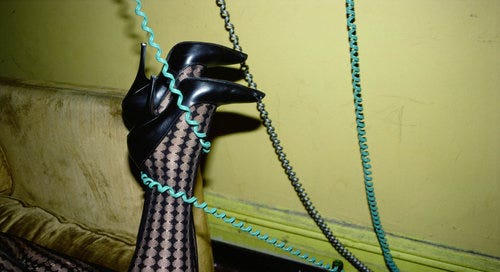





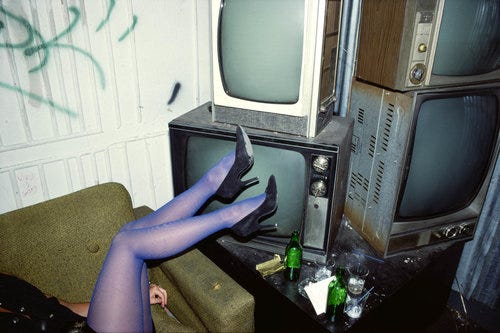
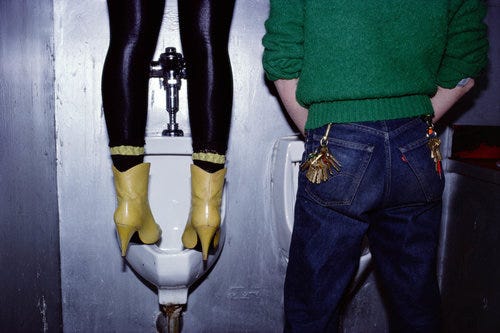

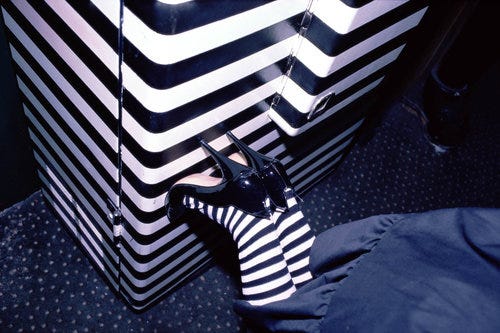
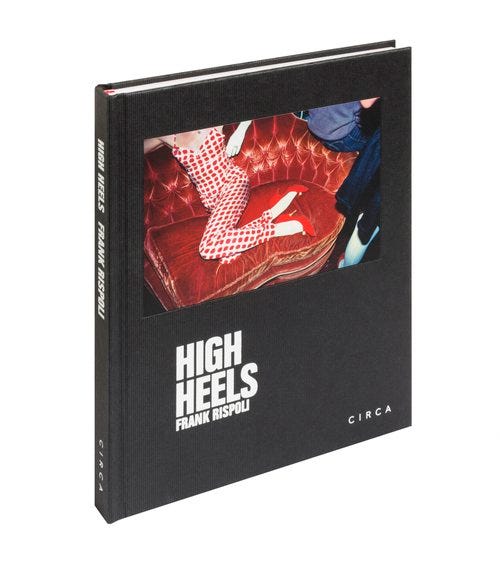
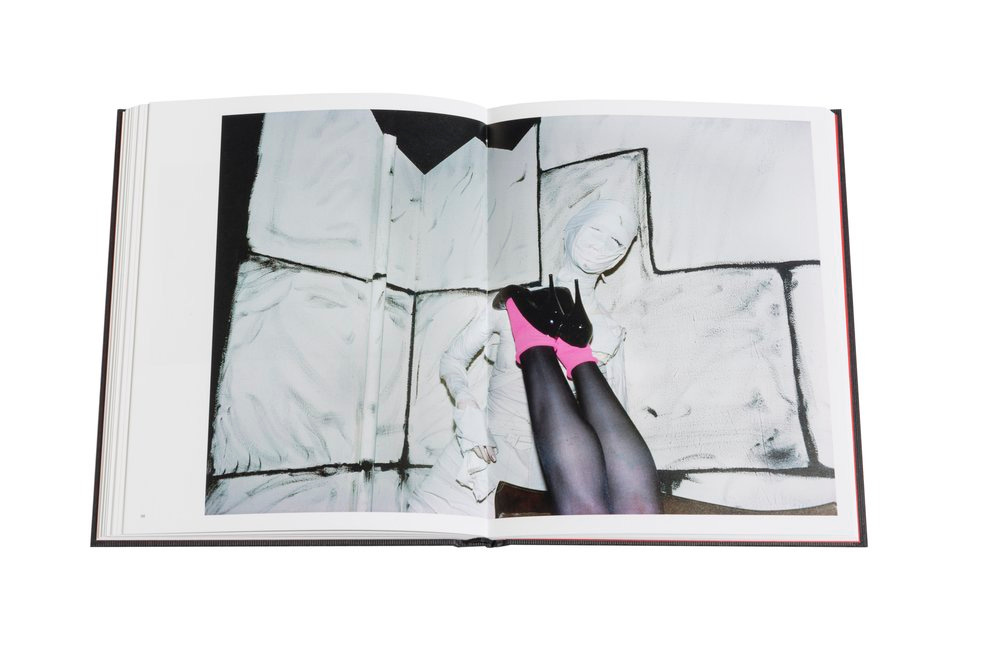
Really interesting and better written than a lot of stuff I read. Well done. Is this to be part of your book or is the time period not correct?